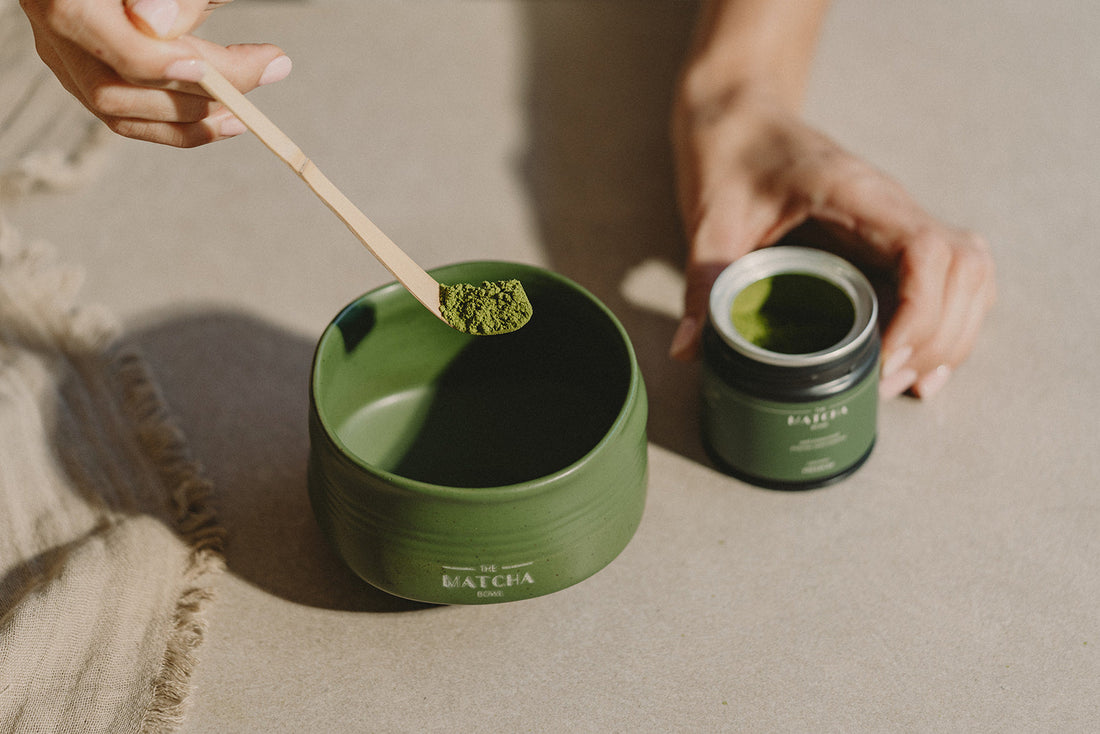
Types of matcha tea and how to choose the right one
A complete guide to distinguishing between ceremonial matcha , premium matcha , and culinary matcha —all organic matcha teas , pesticide-free, and suitable for vegans. It includes practical tips to help you make the right choice and enjoy all its flavor, aroma, and health benefits.
Introduction
Matcha tea is much more than just ground green tea: it's the result of an artisanal process that begins with shade-grown cultivation, continues with stone grinding, and culminates in a beverage packed with flavor and health benefits. In this guide, we compare the three most popular varieties— ceremonial matcha , premium matcha , and culinary matcha —to help you identify which one is right for you. All the teas you'll find at The Matcha Bowl are organic and ecological , ensuring purity, flavor, and complete respect for the environment.
Ceremonial Matcha Tea
- What it is: It is the highest quality matcha, made with very young leaves grown in the shade for 3–4 weeks to enhance their L-theanine and chlorophyll content.
- Color: Bright jade green, a sign of freshness and quality.
- Flavor: Naturally sweet, with pronounced umami and no bitterness.
- Ideal uses: Take only with water at 70–80 °C and beat with chasen until fine foam is obtained.
- Expert tip: Avoid mixing it with milk if you want to appreciate its full notes. Keep the container sealed and in a cool place.
Matcha for cooking
- What it is: Designed for cooking and baking. It's made with mature leaves, which gives it an intense flavor and high catechin content.
- Color: Darker green with olive tinge.
- Flavor: Marked vegetal, with controlled bitterness so that it is maintained when mixed with other ingredients.
- Ideal uses: Pastries, cakes, cookies, ice cream, milkshakes and sauces.
- Expert tip: Pair it with sweet or fatty ingredients to balance its intensity.
Key factors for choosing your matcha
- Main use: Ceremonial → pure ritual · Premium → daily and versatile use · Culinary → cooking and baking.
- Budget: Ceremonial (highest), Premium (intermediate), Culinary (most economical).
- Flavor intensity: Sweet/umami vs. vegetal/intense.
- Properties: All are rich in antioxidants; the ceremonial variety has a higher concentration of L-theanine and chlorophyll.
How to recognize a good matcha tea
- Color: Vibrant and bright green.
- Texture: Ultra-fine powder, without lumps.
- Aroma: Fresh vegetables, without rancid notes.
- Foam: Fine and stable when whipped.
Benefits of choosing well
Choosing the right matcha allows you to enjoy its properties to the fullest:
- Antioxidants (catechins): Cellular protection against oxidative stress.
- L-theanine: Promotes concentration and calm.
- Natural caffeine: Sustained energy without sudden spikes.
- Chlorophyll: Helps in natural detoxification processes.
FAQ
What is the difference between ceremonial and premium matcha?
Ceremonial is the highest quality for drinking neat: young leaves, intense umami, and no bitterness. Premium is slightly less intense and more versatile, ideal for a matcha latte.
What is the best matcha for a latte?
Premium matcha maintains sweetness and umami and combines very well with plant or animal milks.
What matcha is used for baking?
Culinary matcha, due to its stronger flavor and more affordable price, is ideal for cookies, cakes, ice cream, and smoothies.
How to know if a matcha is of good quality?
It should have a bright green color, very fine texture, fresh aroma and stable foam when whipped.
What temperature of water do I use to prepare matcha?
Between 70°C and 80°C to avoid bitterness and preserve its natural sweetness.
Does matcha tea have more caffeine than coffee?
It contains less caffeine than a cup of coffee, but its L-theanine offers more stable and long-lasting energy.

